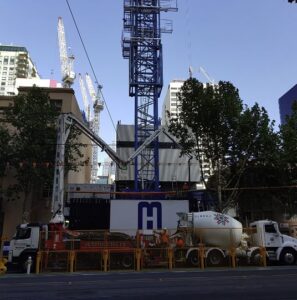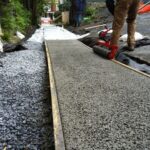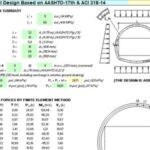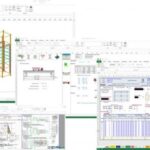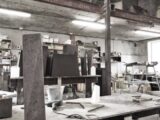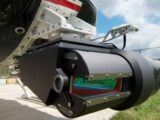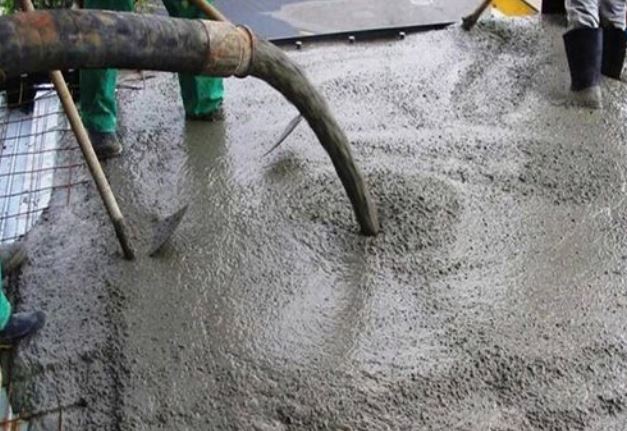
Self-compacting concrete (SCC) – Advantages, Disadvantages and Applications
11 July 2021Table of Contents
Self-compacting concrete (SCC) – Advantages, Disadvantages and Applications
Introduction
Self-compacting concrete (SCC) is a concrete which flows under its own weight and doesn’t require any external vibration for compaction, it has revolutionized concrete placement.
Such concrete should have relatively low yield value to ensure high flow ability, a moderate viscosity to resists segregation and bleeding and must maintain its homogeneity during transportation, placing and curing to ensure adequate structural performance and long termdurability.
Self-compacting concrete (SCC) can be defined as a fresh concrete which possesses superior flow ability under maintained stability (i.e. no segregation) thus allowing self-compaction that is, material consolidation without addition of energy.
It is a fluid mixture suitable for placing in structures with Congested reinforcement without vibration and it helps in achieving higher quality of surface finishes.
The three properties that characterise a concrete as self-compacting Concrete are :
- Flowing ability: the ability to completely fill all areas and corners of the formwork into which itis placed
- Passing ability: the ability to pass through congested reinforcement withoutseparation of the constituents or blocking
- Resistance to segregation: the ability to retain the coarse components of the mixin suspension in order to maintain a homogeneous
Applications of Self-Compacting Concrete
The main applications of this type of concrete are the following:
- Construction of raft and pile foundations
- Retrofitting and repairing constructions
- Structures with complex reinforcement distributions
- Construction of earth retaining systems
- Drilled shafts
- Columns
Advantages of (SCC) Self Compacting Concrete
Self-compacting concrete comes with several advantages compared with regular concrete. Some of these benefits include:
- Reduces labor costs.
- Improved constructability.
- High durability, strength, and reliability.
- Minimizes voids in highly-reinforced areas.
- Reduces permeability in concrete structures.
- Fast placement without mechanical consolidation.
- The SCC construction is faster than normal concrete.
- SCC enables freedom in designing concrete structures
- Creates smoother and more aesthetic surface finishes.
- Eliminates problems associated with concrete vibration.
- Creates high-quality structures with improved structural integrity.
- Allows for easier pumping, and there are many placement techniques available.
- Allows for innovative architectural features, since it can be used in complex forms.
- Reduced noise during placement as no vibration is required
- SCC requires a lower pumping pressure. Hence, concrete can be easily pumpedover longer distances and heights compared to traditional concrete
Disadvantages of (SCC) Self Compacting Concrete
As with any construction material, self-compacting concrete faces the following limitations:
- Material selection is more strict.
- Construction costs are much more higher, compared with regular concrete.
- Higher precision is required when measuring and monitoring.
- There is no globally accepted test standard to undergo an SCC mix design.
- The cost of construction is costlier than conventional concrete construction.
- Many trial batches and laboratory tests are required to use a designed mixture.
- There is no internationally accepted test standard for self-compacting concrete mix.
- The higher flow rate of SCC compared to traditional concrete can cause adynamic pressure, in addition to the hydrostatic pressure of placed concrete, and thismust be taken into consideration for formwork design
Material Use In (SCC) Self Compacting Concrete
Cement :
Ordinary Portland Cement, 43 or 53 grade can be used
Aggregates :
The maximum size of aggregate is generally limited to 20 mm. An aggregate of size 10 to 12mm is desirable for structures having congested reinforcement.
Wherever possible size of aggregate higher than 20mm could also be used. Well graded cubical or rounded aggregates are desirable.
Aggregates should be of uniform quality with respect to shape and grading. Fine aggregates can be natural or manufactured.
The grading must be uniform throughout the work. The moisture content or absorption characteristics must be closely monitored as the quality of SCC will be sensitive to such changes.
Particles smaller than 0.125 mm i.e. 125-micron size are considered as FINES which contribute to the powder content
Mixing Water :
Water quality must be established on the same line as that for using reinforced concrete or prestressed concrete.
Chemical Admixtures :
Super plaseizers are an essential component of SCC providing necessary workability. The new generation super plasticizers termed poly-carboxylated ethers (PCE) is particularly useful for SCC.
Other types may be considered as necessary, such as Viscosity Modifying Agents (VMA) for stability, air-entraining agents (AEA) to improve freeze-thaw resistance, and retarders for Control of Setting.
Mineral Admixtures:
This may vary according to the mix design and the properties required. Below is a list of the different mineral admixtures used, and the properties they provide to the concrete mixture:
- Fly ash: Used to improve the filling of the internal concrete matrix, resulting in fewer pores. This reduces permeability and improves the quality of structures.
- Ground granulated blast furnace slag (GGBS): GGBS helps improve the rheological properties of concrete.
- Stone Powder: Incorporated to improve the powder content of the mixture.
- Silica Fumes: Used to improve the mechanical properties of the structure.
Transport, pumping, placing and finishing
Transport
Self-compacting concrete has higher fluidity compared to traditional concrete. Hence,there is a higher chance of spillage during transport. Additional caution is advised by reducing the batch size on the back of a truck, as well as ensuring the water-tightnessof the drum.
Extreme weather conditions (very high or low temperature) can affect the self-compacting properties of concrete. Under such conditions, the transport duration must be minimized by choosing non-peak hours in congested areas and also by choo-ing the closest concrete production plant to the placement site.
Overall, the averagetime that an SCC mixture can spend on the back of a truck before placement needs to be considered and the mixture design needs to be optimized accordingly. Otherwise,flowability properties might not be achieved.
Pumping, placing and formwork
An advantage of SCC is its excellent flow properties, which results in easier pumping and placing of SCC compared to traditional concrete. After discharging, self-compacting concrete can flow up to 10m in horizontal directions.
The excellent flowability of SCC also results in a much higher filling capability compared to traditional concrete, i.e. it can quickly fill inaccessible voids between reinforcements and formwork.
The placement rate of SCC can occur over ashort amount of time. Therefore, it is essential that all formwork, linings, reinforcing steel and any other embedded objects are secured and tightened before placement.
SCC can be placed with chutes, buckets and pumps. Pumping is the most common method of SCC placement because of excellent flowability without segregation.
Pumping of SCC from a truck using a crane pump at a building site
Surface finish of SCC
SCC is generally used for architectural concrete because the surface finish of SCC is of high quality, often more appealing with sharp edges compared to traditional concrete. The improved surface finish is attributed to the self-levelling and filling capabilities of SCC, which allows concrete to flow smoothly, and thereby fill holes.
The surface finish of traditional concrete often has discolouration because of hydrationby-products and segregation.
Other imperfections such as sand textured areas, honeycombing (aggregate bridging), and some problems caused by mortar loss canal so occur. Using SCC can increase the chance of eliminating these surface imperfections. However, a well-balanced concrete mixture with optimized rheological properties is required to achieve a high-quality surface finish for SCC, i.e. aesthetic appeal for exposed architectural use.
Mixtures with a lower viscosity, i.e. higher slump flow allow for entrained air to escape more efficiently and thereby provide a better surface finish.
The quality of formwork surfaces, type and amount of releasing agent, as well as production and placement methods also affect the surface finish of SCC.

